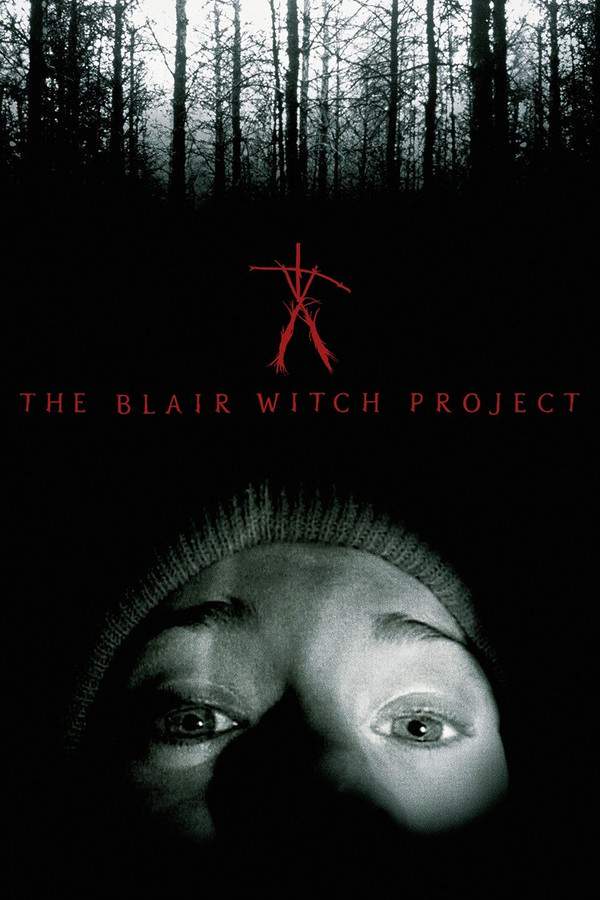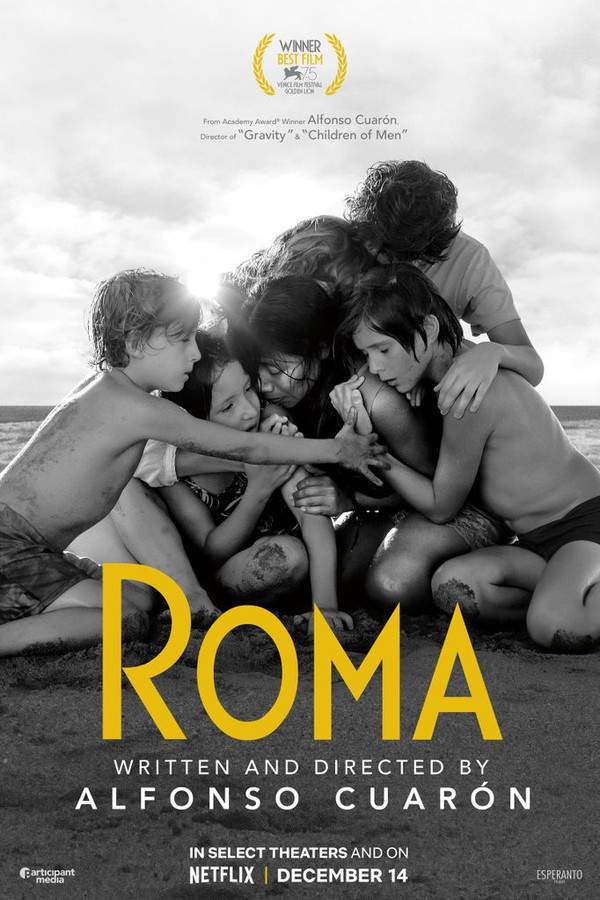What's After the Blog?
Production • Independent Films
Exploring the World of Microbudget Filmmaking
Explore the world of microbudget filmmaking, where creativity triumphs over budget constraints, in our detailed blog post featuring success stories, challenges, and the impact on the film industry.
November 19, 2024

Movies mentioned in this article
Exploring the World of Microbudget Filmmaking
Introduction
Microbudget filmmaking, a term that often flies under the radar in the glitz and glamour of Hollywood, refers to the art of making films with an exceptionally low budget. These projects typically range from a few thousand to a few hundred thousand dollars, a mere fraction of the budget of mainstream studio films. The world of microbudget filmmaking is not just a niche segment of the cinema; it’s a breeding ground for raw talent, creativity, and innovative storytelling that often bypasses traditional narrative and production constraints.
The significance of microbudget films lies in their ability to offer fresh perspectives and unique voices in the film industry. These films are often characterized by their bold narrative choices, experimental techniques, and the ability to tell stories that might not find a place in the mainstream market. Filmmakers in this arena are known for their resourcefulness, often wearing multiple hats, from directing to writing to editing, to bring their vision to life. The rise of digital technology has further democratized the filmmaking process, making it more accessible for aspiring filmmakers to produce quality content with limited resources.
What Defines a Microbudget Film?
At its core, a microbudget film is defined by its budget. While there is no strict threshold, these films typically have budgets ranging from $10,000 to $500,000, starkly contrasting with the multi-million dollar budgets of major studio productions. The essence of microbudget filmmaking is not just in managing a small budget, but in creatively maximizing every dollar spent. This financial limitation often results in more intimate settings, smaller casts, and simpler production values, but this doesn’t diminish the quality of storytelling. In fact, it often enhances it.
Examples of Successful Microbudget Films:
- Primer: Made for just $7,000, this sci-fi thriller won the Grand Jury Prize at the 2004 Sundance Film Festival. It’s a quintessential example of how a complex narrative can be brilliantly executed with minimal resources.
- The Blair Witch Project: With a budget of around $60,000, this film grossed nearly $250 million worldwide, revolutionizing the found footage genre and proving that a compelling story can captivate audiences more than big-budget effects.
- El Mariachi: Shot with a budget of about $7,000, this action film showcases how a filmmaker can achieve remarkable feats with limited resources. Robert Rodriguez, the director, famously raised part of the budget by participating in medical experiments.
These films demonstrate that microbudget filmmaking is not about the compromise of quality but the distillation of cinema to its most essential elements: storytelling, performance, and vision. They prove that a movie doesn’t need a colossal budget to be impactful or commercially successful; it needs a compelling story and a passionate team committed to bringing that story to life.
Challenges and Creative Solutions:
Microbudget filmmakers often face numerous challenges, from limited crew members to constrained shooting locations. However, these limitations often breed creativity. For instance, filmmakers might use natural lighting to avoid the cost of elaborate lighting setups or shoot in real locations instead of built sets. The use of handheld cameras, as seen in movies like Blue Ruin, not only reduces costs but also adds a layer of authenticity and rawness to the film’s aesthetic. In the realm of microbudget filmmaking, constraints are not roadblocks; they are stepping stones to innovation and creativity.
In conclusion, microbudget filmmaking is a testament to the power of creativity over budget. It’s a sector of the film industry that deserves more attention and appreciation for its contribution to the cinematic arts. Whether you’re a movie buff or a budding filmmaker, exploring microbudget films offers a refreshing departure from the predictable patterns of mainstream cinema and a glimpse into the boundless potential of storytelling.
The Creative Freedom of Microbudget Films
Microbudget films are not just about doing more with less; they are about creative liberation. In the absence of substantial financial backing, filmmakers often have unparalleled creative control, unshackled by the demands of studio executives or investors. This freedom allows for bold storytelling, unorthodox styles, and experimental narratives. It’s in this realm where filmmakers truly push the boundaries of what cinema can be. Bold Narrative Choices: In microbudget films, the lack of substantial funding often leads to more personal, intimate stories that might not fit the blockbuster mold. For instance, Tangerine, shot entirely on an iPhone, tells a raw and compelling story of a transgender sex worker in Los Angeles. Its unique approach to filmmaking not only saved costs but also added an authentic feel to the narrative. Innovative Filmmaking Techniques: The constraints of a tight budget can lead to inventive techniques that set these films apart. The use of guerrilla filmmaking, where scenes are shot quickly in real locations without formal permissions, adds a sense of immediacy and realism. In Following, Christopher Nolan’s first feature film, the use of non-linear storytelling and black-and-white footage created a distinctive look and feel, despite the film’s low budget. Famous Directors Who Started with Microbudget Projects: Many acclaimed directors began their careers with microbudget films, using them as a platform to showcase their talents. For example, Pi, Darren Aronofsky’s debut, was produced on a modest budget but showcased his unique vision and storytelling prowess. Similarly, Kevin Smith’s Clerks, shot for just over $27,000, is now a cult classic, illustrating how minimal resources can lead to maximum impact.
”How Do Microbudget Films Manage Their Limited Resources?”
The art of microbudget filmmaking is as much about resource management as it is about creative storytelling. Filmmakers must make every dollar count, often resorting to innovative solutions to stretch their budget without compromising the quality of the film. Budget Management Strategies: Key to microbudget filmmaking is meticulous planning and budgeting. Filmmakers prioritize essential elements like actors and locations, often compromising on aspects that are less critical to the story. For instance, in Moonlight, which was made on a budget of around $1.5 million, the focus was on strong performances and powerful storytelling rather than expensive visual effects or exotic locations. Role of Digital Technology: The advent of digital technology has been a boon for microbudget filmmakers. Digital cameras, editing software, and other production tools have become increasingly affordable and user-friendly, allowing filmmakers to produce high-quality content on a limited budget. Films like Paranormal Activity, made on a shoestring budget, used simple digital effects to create a sense of horror and suspense, proving that you don’t need elaborate setups to make an effective film. Crowdfunding and Community Support: Many microbudget films rely on crowdfunding platforms like Kickstarter or Indiegogo to raise funds. This not only helps in covering production costs but also in building a community around the film. For instance, the success of Veronica Mars’s Kickstarter campaign showed how fan support could breathe life into projects that might otherwise struggle to find funding. Leveraging Social Media for Marketing: With limited budgets, traditional marketing and distribution channels are often out of reach for these films. Social media and online platforms become vital tools for promotion, allowing filmmakers to reach a global audience with minimal expenditure. The viral marketing of The Blair Witch Project is a prime example of how innovative use of the internet can create buzz and attract viewers.
In sum, microbudget filmmaking is a blend of financial prudence, creative problem-solving, and innovative storytelling. It’s a testament to the fact that in the world of cinema, ingenuity often trumps budget, and a well-told story is the most powerful tool a filmmaker can wield.
The Impact of Microbudget Films on the Film Industry
Microbudget films have a profound impact on the film industry, often setting trends and changing the landscape of cinema. These films challenge the status quo, offering fresh perspectives and storytelling methods that differ markedly from mainstream productions. The impact of these films is multifaceted, influencing both the creative and business aspects of the industry. Influencing Mainstream Cinema: Microbudget films often explore themes and styles that are not typically found in mainstream cinema, pushing the boundaries of storytelling. This has a ripple effect, influencing mainstream filmmakers to adopt more innovative and daring approaches. For instance, the success of Napoleon Dynamite, made on a budget of about $400,000, showed the potential of quirky, character-driven narratives, leading to a surge in similar indie-style films in mainstream cinema. Shifting Audience Preferences: The rise of microbudget films coincides with a shift in audience preferences. Viewers are increasingly seeking out films that offer more than just blockbuster entertainment. They crave authentic, thought-provoking stories that reflect diverse experiences and viewpoints. Films like Little Miss Sunshine, which began as a low-budget indie film, resonated with audiences worldwide, showing that there is a hunger for films that are both entertaining and meaningful. Encouraging Diversity and Representation: Microbudget filmmaking provides a platform for voices that are often underrepresented in mainstream cinema. These films are more likely to feature diverse casts and crews, tell stories from different cultural perspectives, and address topics that are typically overlooked by larger studios. Dear White People, for example, used its modest budget to tackle complex issues of race and identity, making a significant impact on discussions of diversity in film.
”Why Are Microbudget Films Gaining Popularity Among Viewers?”
The increasing popularity of microbudget films among viewers can be attributed to several factors. These films offer a departure from the formulaic narratives often found in big-budget productions, providing viewers with fresh, original content. Additionally, the rise of streaming platforms and social media has made these films more accessible than ever before. Authentic Storytelling and Unique Narratives: One of the key appeals of microbudget films is their authentic storytelling. These films often focus on real-life experiences, relatable characters, and raw emotions, providing a more genuine connection for the audience. Films like The Florida Project, made on a modest budget, depict real-world issues with an authenticity that can be hard to find in more polished, big-budget films. Rise of Streaming Platforms: Streaming platforms like Netflix, Amazon Prime, and Hulu have become significant players in the distribution of microbudget films. These platforms provide a global audience for films that might not have the means for a wide theatrical release. The success of films like Roma on Netflix demonstrates the potential of streaming services to elevate microbudget films to critical and commercial success. Word of Mouth and Viral Marketing: In the age of social media, microbudget films often benefit from viral marketing and word-of-mouth promotion. When a film resonates with viewers, they are quick to share their thoughts and recommendations online, creating a buzz that can be invaluable for these low-budget productions. The cult following of films like Donnie Darko, largely driven by word-of-mouth, shows the power of community in promoting and supporting microbudget films.
In conclusion, microbudget films are gaining popularity because they offer something different from the norm. They stand out in a crowded market with their authentic stories, unique perspectives, and innovative storytelling techniques. As the film industry continues to evolve, it’s clear that microbudget films will play a crucial role in shaping its future.
Case Studies: Success Stories in Microbudget Filmmaking
Delving into specific case studies offers a tangible understanding of how microbudget films achieve success despite their financial limitations. These stories not only inspire but also provide practical insights into the journey from conception to completion. “Primer”: A Sci-Fi Phenomenon on a Shoestring Budget
Primer, made with a budget of just $7,000, is a prime example of microbudget success. Directed by Shane Carruth, who also acted in the film, it won the Grand Jury Prize at the Sundance Film Festival in 2004. The film’s complex narrative and innovative use of time travel themes captivated audiences and critics alike. Carruth’s background in mathematics and engineering lent authenticity to the film’s scientific elements, proving that a strong knowledge base and creative vision are invaluable assets in filmmaking. “The Blair Witch Project”: Redefining Horror and Marketing
Another exemplary success story is The Blair Witch Project. With a budget of around $60,000, it grossed nearly $250 million worldwide. This film revolutionized the horror genre and pioneered a new form of viral marketing. The filmmakers used the internet to create a backstory that many initially believed to be true, sparking immense interest before the movie’s release. This marketing strategy, combined with the film’s found-footage style, created a sense of realism that deeply resonated with viewers. “Moonlight”: An Oscar-Winning Masterpiece
Moonlight, made for around $1.5 million, is a powerful testament to the impact of microbudget films. Winning the Best Picture Oscar in 2017, it broke numerous barriers in terms of content, storytelling, and representation. The film’s intimate portrayal of its protagonist’s struggle with identity and sexuality brought a new level of depth and nuance to cinema. The success of “Moonlight” demonstrates how microbudget films can not only achieve critical acclaim but also make a significant social and cultural impact.
Challenges and Opportunities in Microbudget Filmmaking
While microbudget filmmaking can lead to extraordinary outcomes, it is not without its challenges. However, each challenge also presents an opportunity for innovation and growth. Navigating Financial Constraints
The most obvious challenge in microbudget filmmaking is the limited budget. Filmmakers must be extremely judicious with every expense, often relying on favors, bartering, and a do-it-yourself ethos. This financial constraint, however, breeds creativity, forcing filmmakers to think outside the box and come up with cost-effective solutions. Limited Resources and Crew
Microbudget films often operate with a minimal crew, sometimes even a one-person team handling multiple aspects of filmmaking. This can be physically and mentally exhausting and limits the scale of the production. On the flip side, it allows for a more intimate and collaborative working environment where every team member has a significant impact on the final product. Distribution and Visibility Challenges
Getting a microbudget film in front of an audience can be a daunting task. Without the marketing muscle of big studios, these films often struggle for visibility. However, this challenge has been mitigated somewhat by the advent of digital and social media platforms, which provide alternative avenues for promotion and distribution. Festivals also play a crucial role in showcasing these films to a broader audience. Opportunities for New Talent
One of the most significant opportunities presented by microbudget filmmaking is the platform it provides for emerging talent. These films often serve as a launchpad for new actors, directors, and writers, giving them the chance to showcase their skills and gain recognition in the industry.
In summary, microbudget filmmaking is a field rich with opportunities despite its inherent challenges. It is an area where creativity, passion, and perseverance can lead to remarkable achievements, influencing the film industry and audiences worldwide.
Conclusion
As we reach the end of our exploration into the world of microbudget filmmaking, it’s clear that these films represent much more than just low-budget projects. They are a testament to the power of storytelling, creativity, and determination. Microbudget films challenge the norms of traditional filmmaking, showcasing that compelling narratives and engaging characters are achievable without multimillion-dollar budgets. These films not only contribute significantly to the diversity and richness of cinema but also inspire and pave the way for future filmmakers.
The success stories in microbudget filmmaking remind us that cinema is fundamentally about storytelling. Films like Primer, The Blair Witch Project, and Moonlight have not only achieved critical acclaim and commercial success but have also left an indelible mark on the industry. They demonstrate that with a clear vision, innovative approach, and relentless passion, filmmakers can create powerful experiences that resonate with audiences worldwide.
Moreover, the rise of digital technology and the increasing accessibility of filmmaking tools have democratized the process, allowing more voices to be heard and stories to be told. The challenges associated with microbudget filmmaking, while significant, often fuel creativity and innovation, leading to unique and memorable films. As we continue to witness the evolution of the film industry, the role of microbudget films in shaping its future remains undeniable.
Discover More on ATM
In conclusion, we invite you to continue exploring the fascinating world of cinema with us. For more insights into movies of all budgets and genres, check out What’s After the Movie (ATM), where you can find detailed information on movies, including descriptions, revenue, actors, directors, ratings, and summaries. And don’t forget to visit the ATM blog for more engaging posts like this one, where we dive into various aspects of the movie industry, offering unique perspectives and enlightening discussions.
Thank you for joining us on this journey through the realm of microbudget filmmaking. We hope this exploration has inspired you to delve deeper into this innovative and impactful segment of the film industry, where creativity knows no bounds, and every budget tells a story.
Continue reading

What's After the Movie?
Not sure whether to stay after the credits? Find out!
Explore Our Movie Platform
New Movie Releases (2026)
Famous Movie Actors
Top Film Production Studios
Movie Plot Summaries & Endings
Major Movie Awards & Winners
Best Concert Films & Music Documentaries
Movie Collections and Curated Lists
© 2026 What's After the Movie. All rights reserved.























